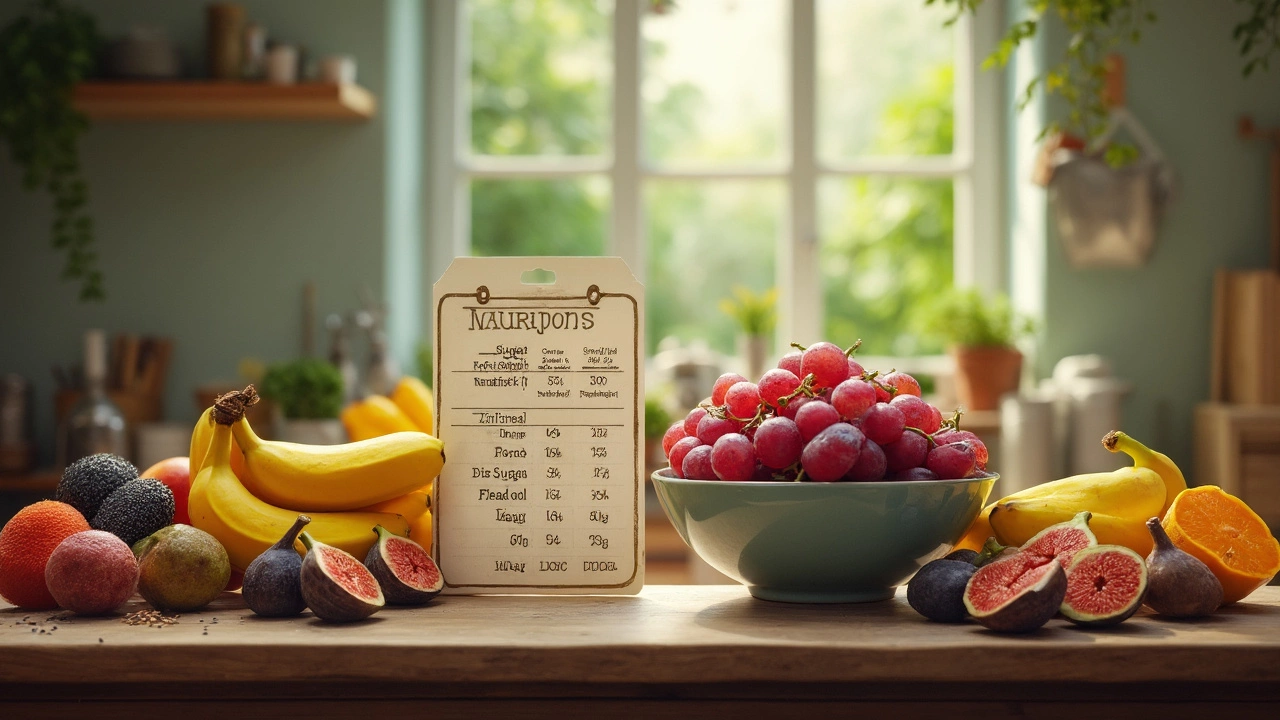Sugar in Fruit: Understanding Natural Sweetness
Ever wonder why a piece of orange tastes sweet but doesn’t make you feel guilty like a candy bar? The secret is the type of sugar inside the fruit. Fruit sugar is mostly fructose, a natural carbohydrate that comes with fiber, vitamins, and minerals. Those extra nutrients slow digestion, keep blood sugar steadier, and give you energy that lasts longer than the quick spike you get from refined sugar.
Why Fruit Sugar Isn’t the Bad Guy
Most people lump all sugar together, but the body treats fruit sugar differently because of the fiber bundle. When you eat an apple, the fiber wraps around the fructose and slows its entry into the bloodstream. That means your insulin response is gentler, and you’re less likely to crash later. Studies show that people who eat whole fruit regularly have lower risk of heart disease and diabetes compared to those who drink sugary sodas.
Another point is portion. A medium banana has about 14 grams of sugar, while a soda can have 30 grams or more with no nutrients attached. The sugar in fruit also brings antioxidants like vitamin C, which help protect cells from damage. So, swapping a sugary snack for a handful of berries gives you sweetness plus a nutrient boost.
Smart Ways to Enjoy Fruit Without Overdoing Sugar
If you’re watching your carb intake, you don’t have to cut fruit out completely. Pairing fruit with protein or healthy fat can further blunt the sugar rise. Try apple slices with a spoonful of almond butter, or a bowl of berries topped with Greek yogurt. The protein and fat keep you fuller longer and make the natural sugar feel less intense.
Choose lower‑sugar fruits when you need a snack. Berries, kiwi, and grapefruit have less fructose than grapes or mangoes. Also, aim for whole fruit instead of juice. When you blend a fruit smoothie, you lose the fiber and end up with a sugar‑laden drink that behaves more like soda.
Lastly, be mindful of dried fruit. Drying concentrates the sugar, so a small handful can equal a much larger portion of fresh fruit. If you love raisins, keep the serving size tiny or mix them into oatmeal for extra texture without overloading on sweetness.
Bottom line: sugar in fruit is a natural, nutrient‑rich source that can fit into almost any diet when you eat it whole and pair it wisely. Enjoy the sweet taste, reap the vitamins, and stay balanced without worrying about the sugar scare.
Most Unhealthy Fruit: What to Watch Out For
Not every fruit gets a clean bill of health—some can load your body with sugar, calories, or unexpected side effects. This article breaks down which fruit takes the title of the most unhealthy and why. You'll learn what actually makes a fruit unhealthy and get real advice on enjoying fruit without going overboard. Plus, you’ll get answers to myths about fruit and blood sugar. It’s all about smart choices, not ditching fruit altogether.
